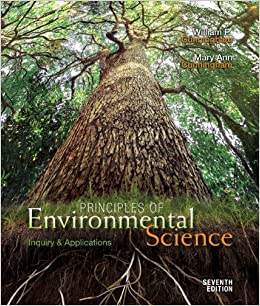
Principles of Environmental Science 7th Edition by William Cunningham,Mary Cunningham
Edition 7ISBN: 978-0071314947
Principles of Environmental Science 7th Edition by William Cunningham,Mary Cunningham
Edition 7ISBN: 978-0071314947 Exercise 1
Describe the steps in the scientific method.
Explanation
We may already be using the scientific method without being aware of it. Suppose we have a flashlight that does not work. The flashlight has several components (switch, bulb, batteries) that could be faulty. If we change all the components at once, our flashlight might work, but a more methodical series of tests will tell us more about what was wrong with the system. Knowledge about that may be useful for the next time when we have a faulty flashlight. So, we decide to follow the standard scientific steps.
The steps in the scientific method:
1. Observe that our flashlight does not light ; also, there are three main components of the lighting system (batteries, bulb, and switch).
2. Propose a hypothesis a testable explanation; "the flashlight does not work because the batteries are dead."
3. Develop a hypothesis and predict the result that would indicate our hypothesis was correct: "I will replace the batteries; the light should then run on."
4. Gather data from this test: after we replace the batteries did the light turn on?
5. Interpret our result: if the light works now, then our hypothesis was right; if not, then we should formulate a new hypothesis, perhaps that the bulb is faulty, and develop a new test for that hypothesis.
The steps in the scientific method:
1. Observe that our flashlight does not light ; also, there are three main components of the lighting system (batteries, bulb, and switch).
2. Propose a hypothesis a testable explanation; "the flashlight does not work because the batteries are dead."
3. Develop a hypothesis and predict the result that would indicate our hypothesis was correct: "I will replace the batteries; the light should then run on."
4. Gather data from this test: after we replace the batteries did the light turn on?
5. Interpret our result: if the light works now, then our hypothesis was right; if not, then we should formulate a new hypothesis, perhaps that the bulb is faulty, and develop a new test for that hypothesis.
Principles of Environmental Science 7th Edition by William Cunningham,Mary Cunningham
Why don’t you like this exercise?
Other Minimum 8 character and maximum 255 character
Character 255


